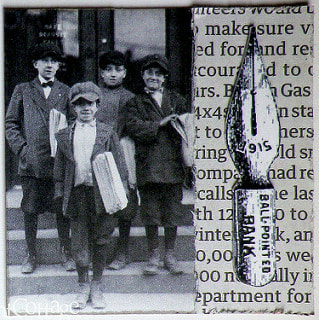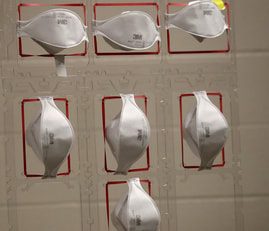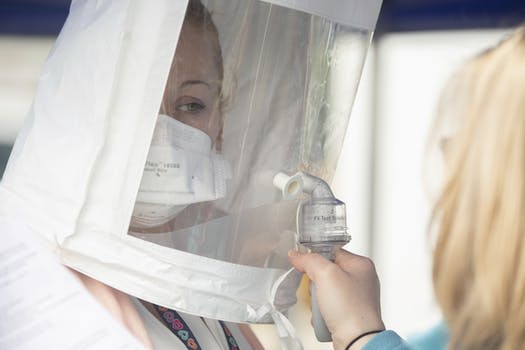| U.S. sent millions of face masks to China early this year ignoring pandemic warning signs U.S. government reversed course in April after previously encouraging shipments. By Juliet Eilperin , Jeff Stein , Desmond Butler and Tom Hamburger, Washington Post APRIL 18, 2020 — 10:45PM |
In those two months, the value of protective masks and related items exported from the United States to China grew more than 1,000 percent compared with the same time last year — from $1.4 million to about $17.6 million, according to a Post analysis of customs categories which, according to research by Public Citizen, contain key PPE. Similarly, shipments of ventilators and protective garments jumped by triple digits.
“Instead of taking steps to prepare, they ignored the advice of one expert after another,” said Rep. Lloyd Doggett, D-Texas. “People right now, as we speak, are dying because there have been inadequate supplies of PPE.”
While the percentage increase of exports to China was steep, they represent a small fraction of the overall U.S. need. Throughout the country, the shortage has forced hospitals, nursing homes and first responders to ration masks and other protective gear as they treat infected and high-risk patients, creating a secondary health crisis among first line providers.
In the early days of the COVID-19’s exponential march across the globe, when it was still mostly contained in China, there was no widespread sense of crisis in the White House. But by the end of January, briefings to White House national security staff made clear that the danger of a major pandemic was real. By then seven Americans had fallen ill, and experts said the need for an adequate supply of protective gear should have been apparent.
Nonetheless, on Jan. 30, Commerce Secretary Wilbur Ross said on Fox Business that the outbreak could “accelerate the return of jobs to North America” because companies would move factories away from impacted areas.
A senior Commerce official, speaking on the condition of anonymity due to the sensitivity of the matter, said senior leaders at the department’s International Trade Administration shut the program down on March 4, shortly after the flier was distributed.
“Department of Commerce senior leadership is aware of this issue and is investigating,” the official said, adding that the ITA has helped 100 groups and 47 states distribute protective equipment since the outbreak began and continues to work in 25 countries to identify sources of medical supplies.
Still, Doggett was incredulous that masks desperately sought today by U.S. medical providers were provided to China by U.S. companies in large numbers through February.
“This is one of multiple failures that have contributed to a significant loss of life in the United States,” Doggett said. “At the very time that Trump is having his first news conference with his coronavirus team, his administration is hawking the vital medical supplies under the title, ‘Covid-19 to China.’ “
Preliminary data from the Centers for Disease Control show that 9,282 U.S. health-care workers have been diagnosed with the virus through April 2. Through April 9, at least 723 had been hospitalized, including 184 in the ICU. Twenty-seven had died from a COVID-19 infection.
A leading producer of masks — 3M, the St. Paul, Minnesota-based manufacturing giant — made a share of this equipment at factories in the United States as well as in plants located in China.
“We were not aware of any discouragement from anyone during those very early days of the crisis, including from the U.S. government, to export from outside of China into China,” said 3M spokeswoman Jennifer Ehrlich. On the contrary, through February some administration officials were calling attention to China’s plight and encouraging assistance from the United States.
Today, China’s imports of masks and other PPE from around the world is seen by some White House officials as part of a deliberate attempt by China to corner the market as it concealed and downplayed the danger posed by the outbreak.
“While China was silent on the seriousness of the crisis, they were quietly buying up a large portion of the world’s global supply for masks and other PPE,” said Peter Navarro, who directs trade policy at the White House.
Navarro was among the U.S. officials who raised early alarms, writing memos early in the year that the outbreak could imperil millions of Americans and required increased supplies of protective equipment.
Desperate officials in Illinois reported last week that N95 masks, which typically cost $1.75 apiece, are being sold for as much as $12 each as states frantically bid against one another.
On April 2, the U.S. government reversed course completely when President Donald Trump announced his administration would invoke the Defense Production Act in a way that could have prevented 3M from selling masks to foreign customers, requiring the company to provide them to U.S. customers first. “We hit 3m hard today after seeing what they were doing with their masks,” Trump tweeted, as he announced plans to invoke the Defense Production Act “against 3m.”
The president’s push encountered immediate resistance from Canada, other U.S. allies, and 3M, whose CEO called Trump’s complaint “absurd” and warned of “consequences on a humanitarian level” if the company did not fulfill orders to other countries.
Upset that the president was antagonizing trading partners in a way that could hamper supplies of critical equipment coming to the United States, foreign leaders and U.S. companies used a White House back channel, appealing to members of a task force reporting to Trump’s son-in-law and senior adviser Jared Kushner. The backdoor approach was successful: Trump reversed course three days later and announced an “amicable” agreement: 3M could continue providing masks to foreign customers, while ramping up domestic production. Despite the president’s caustic remarks about 3M, a senior White House official had praise for that company and another U.S. manufacturer of masks — Honeywell — for quickly agreeing to step up domestic mask production and distribution.
N95 masks derive their name from the fact that they filter at least 95 percent of airborne particles. Known as respirators, the N95 masks used in hospital settings differ from those used at industrial sites, and are subject to different federal regulatory requirements. It took weeks for the administration to clear the use of the industrial masks for health care purposes, and then additional delay occurred when the industry demanded Congress approve legislation shielding it from liability lawsuits.
Health and Human Services Assistant Secretary Robert Kadlec testified in February that the U.S. would need 3.5 billion N95s in a serious pandemic.
Early in the outbreak response, according to the Department of Health and Human Services, the Strategic National Stockpile had approximately 13 million N95 respirators available to distribute to U.S. health care workers, and they have now given away 90 percent of them.
Nicole Lurie, who served as Assistant Secretary of HHS for preparedness and response in the Obama administration, said the White House “could have acted much earlier to alleviate the mask shortage by completing work on a high-speed mask production line and placing orders early to manufacturers to surge production.”
Data from both the U.S. and China capture the scope of the influx of protective face masks to the world’s most populous country during January and February. In those two months, China’s trade data show imports of a category of goods which includes surgical and N95 masks jumped nearly 2,200 percent over a year earlier.
China produces about half of the world’s masks, but in those two months, the country transformed from a minor mask buyer to the world’s single biggest importer. While it did not report separate January and February totals this year, other countries’ data obtained via Trade Data Monitor shows they exported far more mask-related equipment to China in February, when deaths and cases in that country peaked. Among its biggest suppliers were South Korea, Japan and the United States.
The Chinese government’s customs arm estimates it cleared nearly 2.5 billion pieces of epidemic-related equipment between Jan. 24 and Feb. 29, including just over a billion masks and more than 25 million protective suits. On Feb. 24 alone, Chinese customs cleared nearly 43 million face masks. A separate analysis by Public Citizen, a left leaning, group, also found a spike in U.S. exports of protective gear to China.
America now faces acute and deadly shortages of proper medical equipment. A recent survey found nearly 90 percent of American mayors say they do not have enough test kits or face masks, while 85 percent say they do not have enough ventilators. The Office of the Inspector General at HHS found “severe shortages” of testing kits and personal protective equipment. Numerous hospitals and states have reported that nurses and doctors are forced to resort to makeshift gear that increases the odds of exposure.
Ehrlich, the 3M spokesperson, said her firm adjusted its supply chain earlier this year based on what it had learned from prior virus outbreaks.
“Nearly all of the respirators 3M produces in China are for the China market. Given the severe humanitarian need there, however, and as a company with a global supply chain, we also directed some additional production into China,” she said.
Chinese officials undertook several measures to ensure that the protective equipment stayed within the country, Ehrlich added. The municipal government of Shanghai informed 3M in late January it “was requiring additional supervision and control of certain 3M facilities in China” to help control the spread of the coronavirus there, she said.
“As a result of that action, the Municipal Government of Shanghai authorities assumed responsibility for order handling and product delivery of 3M respirators in Shanghai at this time,” Ehrlich said. “This impacted 3M China’s ability to respond to product orders in the normal course.”
Navarro said the major factor restraining the U.S. response was the fact that the Chinese government had not permitted American scientists into Wuhan, and the World Health Organization had delayed labeling the crisis a pandemic.
“America and the world lost a full six weeks of preparation to the CCP’s deadly silence, a time during which the Wuhan virus might well have been put quickly back into its lethal bottle,” he said, referring to the Chinese Communist Party.
In a March 31 media conference, China’s director of the Foreign Ministry Information Department Hua Chunying rejected the idea that her country was hoarding protective equipment.
“China’s fight against COVID-19 isn’t over yet,” she said. “We are under heavy pressure to guard against imported cases and a rebound in indigenous cases, and so there is a huge demand for medical supplies. It is the government’s top priority to prevent and control the epidemic at home and safeguard people’s health.”
Hua added that China has provided 120 countries and four international organizations with surgical masks and other forms of equipment.
The Chinese Foreign Ministry declined to answer questions about its mask production and distribution, instead referring to its previous public remarks.
With local governments and hospitals appealing to members of Congress for help securing protective equipment, Congress authorized a special commission last month that will review the international supply chain and its effect on domestic health security.
“This is now on the top of our list of concerns,” said Rep. Lauren Underwood, D-Ill., a nurse and public health expert, who co-sponsored the legislation. In an interview this week, she described fielding calls about a lack of protective equipments. “We cannot accept a situation that effectively makes our health professionals expendable,” she said. “It is unacceptable.”




 RSS Feed
RSS Feed